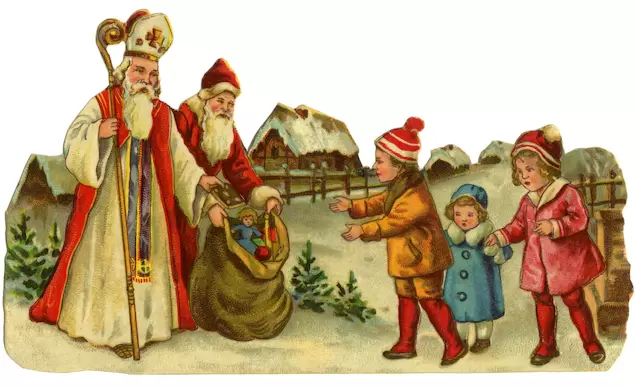|
By I. Doherty The story of Santa Claus can be traces back to a monk by the name of St. Nicholas hundreds of years ago. St. Nicholas who was well respected for his devotion and kindness became the subject for numerous tales. He reportedly donated all his inherited fortune and traveled the countryside to serve the ill and impoverished. One of the most well-known St Nicholas tales is about how he gave three poor sisters a dowry so they could be married, preventing their father from selling them into slavery or prostitution.
Over many years, Nicholas’s reputation grew, and he began to be known as the protector of children and sailors. His fest day is marked on December 6th, which is coincidentally the anniversary of his death. Traditionally getting married or making significant purchases on this day was considered lucky. St. Nicholas was the most well-liked saint in Europe by the Renaissance, and he remained this way even after the Protestant Reformation (when the adoration of saints starred to be prohibited). Nick’s Dutch nickname, Sinter Klaas, a shorter version of Sint Nikolaas, gave rise to the term Santa Claus. Author Washington Irving identified St. Nicholas as the patron saint of New York in 1809, which contributed to the tradition of Sinter Klass being more well known. Sinter Klaas’ notoriety increased, and he was referred to as a “rascal” wearing a blue three-cornered hat, a scarlet waistcoat and yellow stocking, to a man sporting a broad brimmed hat and a big pair of Flemish trunk hose. Since the holiday’s revival in the early 19th century, gift giving has played a significant role in the Christmas celebration, with a focus mostly on children. In 1820, shops began to promote Christmas shopping and by the 1820s newspapers had established dedicated sections for holiday advertisements, many of which included illustration of Santa Claus. The lengthy poem “An Account of a Visit from St. Nicholas” also known as “’Twas’ the Night Before Christmas”, was written by Episcopal clergyman Clement Clarke Moore in 1822 for his three children. Our present conception of Santa Claus as a right jolly old elf with an overweight figure and the mystical ability to ascend a chimney with just a nod of his head is partly owing to Moore’s poem! Moore’s poem helped popularize the now-famous image of Santa Claus who traveled from house to house in Christmas Eve in “a small sleigh” escorted by eight reindeer. “An Account of a Visit from St. Nicholas” created a new and immediately popular worldwide icon.
0 Comments
Leave a Reply. |
Categories
All
Archives
June 2024
|

